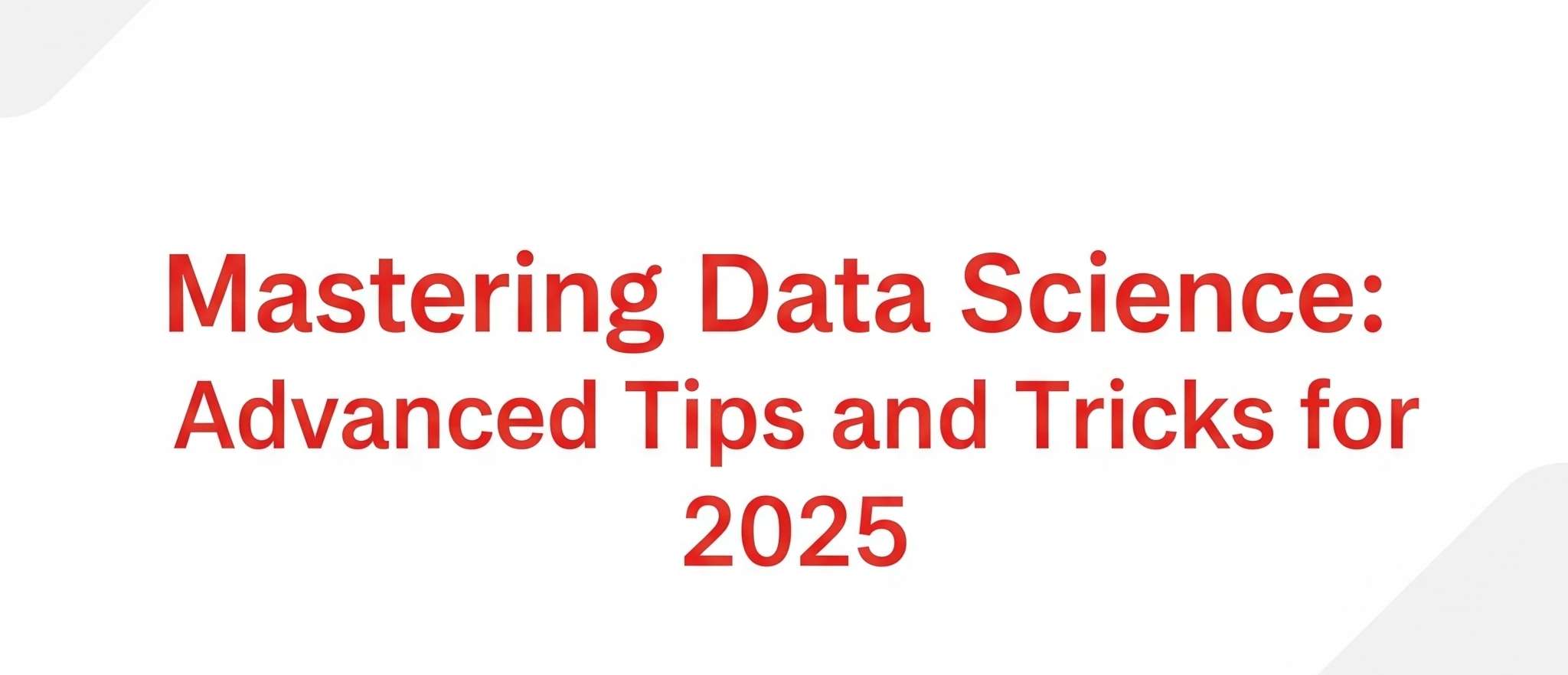The world of data science never stands still. In 2025, with AI systems becoming smarter, models growing more complex, and datasets expanding rapidly, simply knowing the basics is no longer enough. To truly excel, data professionals must adopt smarter tools, workflows, and ways of thinking.
At Data Science Training Institute, we train future-ready data scientists. In this post, we’ll share advanced tips and tricks to help you master data science in 2025—beyond just writing code or training models.
1. Go Beyond the Dataset: Understand the Problem First
Too many data science projects fail because they start with the data—not the problem.
Pro Tip: Spend time with stakeholders to understand business goals, success metrics, and real-world constraints. Translate vague problems into concrete, testable hypotheses.
In 2025, soft skills like communication, framing problems, and cross-functional collaboration are just as important as technical skills.
2. Think in Terms of Pipelines, Not Just Models
Building a great model is only 20% of the job. The rest is data collection, preprocessing, deployment, and monitoring.
Use tools like:
-
Apache Airflow for orchestration
-
MLflow for tracking experiments
-
DVC or Weights & Biases for versioning datasets and models
-
FastAPI or Flask to turn models into APIs
Think like an engineer, not just an analyst.
3. Make the Most of Large Language Models (LLMs)
LLMs like GPT-4, Claude, and Gemini are reshaping the data science landscape. In 2025, their use is widespread in:
-
Automated feature engineering
-
Code generation for EDA and cleaning
-
Natural language querying of databases
-
Synthetic data generation
Tip: Learn to fine-tune or prompt-tune LLMs for specific data tasks, and understand their limitations and biases.
4. Optimize, Don’t Just Analyze
Model accuracy isn’t everything—especially in production. Focus on:
-
Model efficiency (latency, memory usage)
-
Fairness and explainability (using SHAP, LIME, or Fairlearn)
-
Real-world impact (cost savings, time reduction, user experience)
Bonus: Learn how to quantify ROI for your models. This makes your work far more valuable to employers.
5. Automate Repetitive Tasks
Data scientists today spend up to 40–60% of their time on repetitive tasks. In 2025, automation is not optional.
What you can automate:
-
Data cleaning (using Pandas AI or cleanlab)
-
Exploratory Data Analysis (with libraries like Sweetviz or AutoViz)
-
Hyperparameter tuning (with Optuna or Ray Tune)
-
Model selection (with AutoML frameworks like H2O.ai or Google AutoML)
This frees up your time for creative problem-solving and innovation.
6. Stay Sharp with Real Projects
Reading blogs or watching tutorials only takes you so far. Mastery comes from solving messy, real-world problems. Try:
-
Kaggle competitions with live leaderboards
-
End-to-end projects with your own data (scraped, IoT, or public APIs)
-
Deploying models on cloud platforms like AWS, Azure, or GCP
-
Collaborating on open-source GitHub projects
At Data Science Training Institute, our capstone projects are designed to mimic real business scenarios—so students are job-ready from day one.
7. Keep Learning: 2025’s Must-Know Tools and Topics
To stay ahead of the curve, familiarize yourself with:
-
LangChain & LlamaIndex – for building LLM apps
-
Vector databases – like Pinecone or FAISS for semantic search
-
Time Series Forecasting with Deep Learning – using Temporal Fusion Transformers
-
Responsible AI – understanding ethics, bias, and compliance
-
Graph Neural Networks (GNNs) – for recommendation, fraud detection, and social analysis

